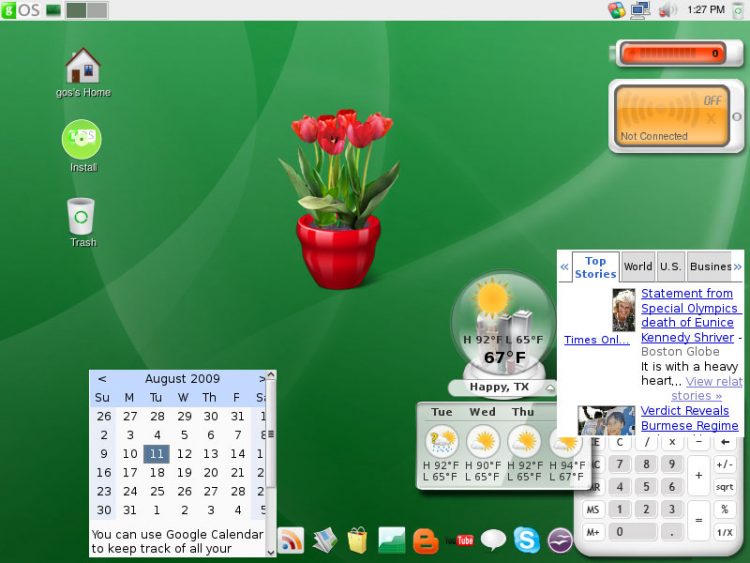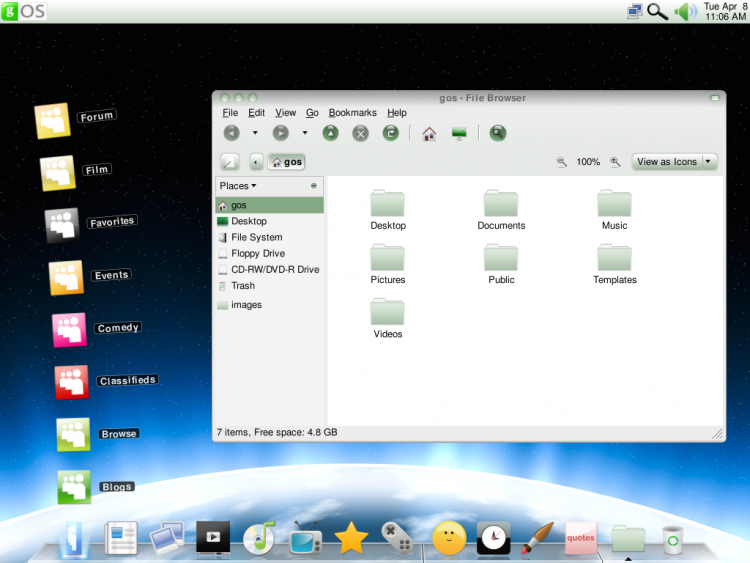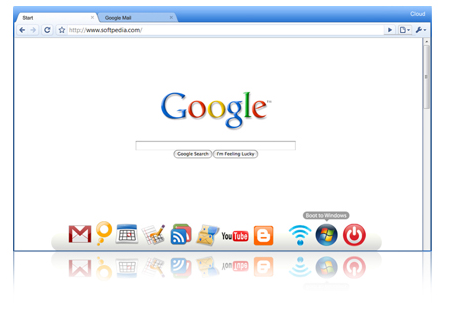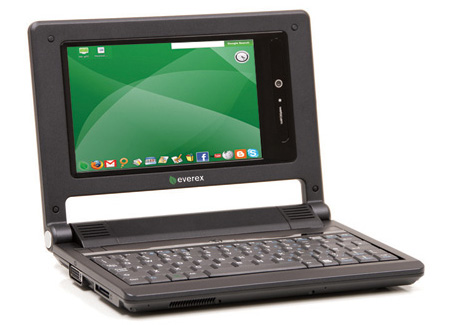If I asked readers who can remember the gOS Linux distribution to raise their hands …chances are no-one would!
See, gOS was a short-lived, green-coloured Ubuntu-based operating system that made a splash in early 2008 when it became the default OS on a line of PCs, laptops and netbooks from a computer manufacturer named ‘Everex’.
Much of the hardware gOS ran on would go on to be sold exclusively at the American Walmart chain, such as the ‘mac mini’ style gPC (more on that in a bit).
But let’s start where gOS started — on the Cloudbook.
The Everex CloudBook
If gOS, and Everex to a lesser extend are remembered for anything it’s the Everex CloudBook.
The Cloudbook wasn’t the prettiest netbook ever made, and it certainly wasn’t the fastest, but it came riding a wave of hype, dubbed the ‘ASUS EeePC killer’.
The Everex Cloudbook came with a 800 x 480 resolution 7″ screen; a 1.2Ghz VIA processor (which was slower than the EeePC’s 900mhz Celeron); a mediocre 512MB of RAM; and a slow 4200RPM 30GB HDD.
One unique ‘feature’ of the Cloudbook that sticks in the mind was the bizarrely placed trackpad — above the keyboard — as this video from the time demos:
Despite the hardware, reaction to the ‘gOS’ operating system that the Cloudbook shipped was unwaveringly positive for the era.
Future updates to the OS would refine its feature set and iron out kinks. This lead to later versions of the OS, like the MySpace-integrated edition that shipped on the MyMiniPC, being described as ‘simply amazing’ by tech sites like Slashgear!
So far, so good — so what happened?
gOS – Good Operating System
gOS was based on Ubuntu 7.10, and later 8.04 LTS. It originally used the E17 (Enlightenment) desktop environment, but switched to a Compiz-powered GNOME interface for better ‘integration’ with Ubuntu.
Long before Chrome OS was a thing, gOS made strong use of ‘web apps’, with ‘Mozilla Prism’ apps for:
- GMail
- Google Maps
- Google News
- Google Talk
- Blogger
With such an emphasis placed on ‘web apps’, particularly those from Google – the ‘g’ in ‘gOS’ was often interpreted as standing for ‘Google’. Indeed, a lot of early press refered to it as ‘google os’ — but was it?
No. The ‘g’ actually stood for ‘Good’.
More typical of Linux distributions, gOS also came with a variety of native apps installed by default. Including:
- Firefox
- Skype
- Thunderbird
- OpenOffice
- Wine
- Google Gadgets
Ahh, Google Gadgets:

The interface of gOS was also very typical of many Ubuntu users desktops at the time: lurid (in hindsight) theme, inconsistent icon set, layerings of eye candy, a dock with animated effects, and a raft of applets and icons peppering the panel.
The OS would switch between using the lightweight wBar dock and the (at the time) 3D-dependant ‘Avant Window Navigator’ (better known as ‘AWN’) over the course of its various iterations.
The UI flip-flopping was indicative of the distro itself. It could never decide if wanted to be a ‘good looking Linux distro’ or an OS capable of running on the (often) limited hardware it shipped on.

What happened to gOS?
I’ll say it: gOS has to be admired for being one of few Linux distributions to ship on actual consumer hardware by default. Being sold on the shelves of Walmart is no mean feat.
But where is gOS now?
The short answer is ‘defunct’.
Swelled on by the initial success of gOS, David Liu, the distribution’s founder, began work on a truly web orientated OS called ‘Cloud OS’.
A handful of devices running Cloud OS were shown off during Consumer Electronics Show (CES) 2009. Despite promises of deals that would see the OS ship alongside Windows on various laptops, that was, pretty much, the last heard of both Cloud OS and gOS.

The gOS website fell offline; Everex shut down its American operations in 2009; and David Liu moved onto Chinese microblogging service “WoZai”.
I reached out to gOS founder David Liu in hopes of getting a bit more information on why the burgeoning OS was so suddenly abandoned, but to no avail.
Download gOS
Feeling nostalgic for gOS? Want to try it out? Well you can as mirrors of the last available .iso remain available for download.
But because gOS typically shipped on devices ISOs of the OS weren’t common. Alas, many of its earlier versions, such as the version with MySpace integration, are unavailable.

